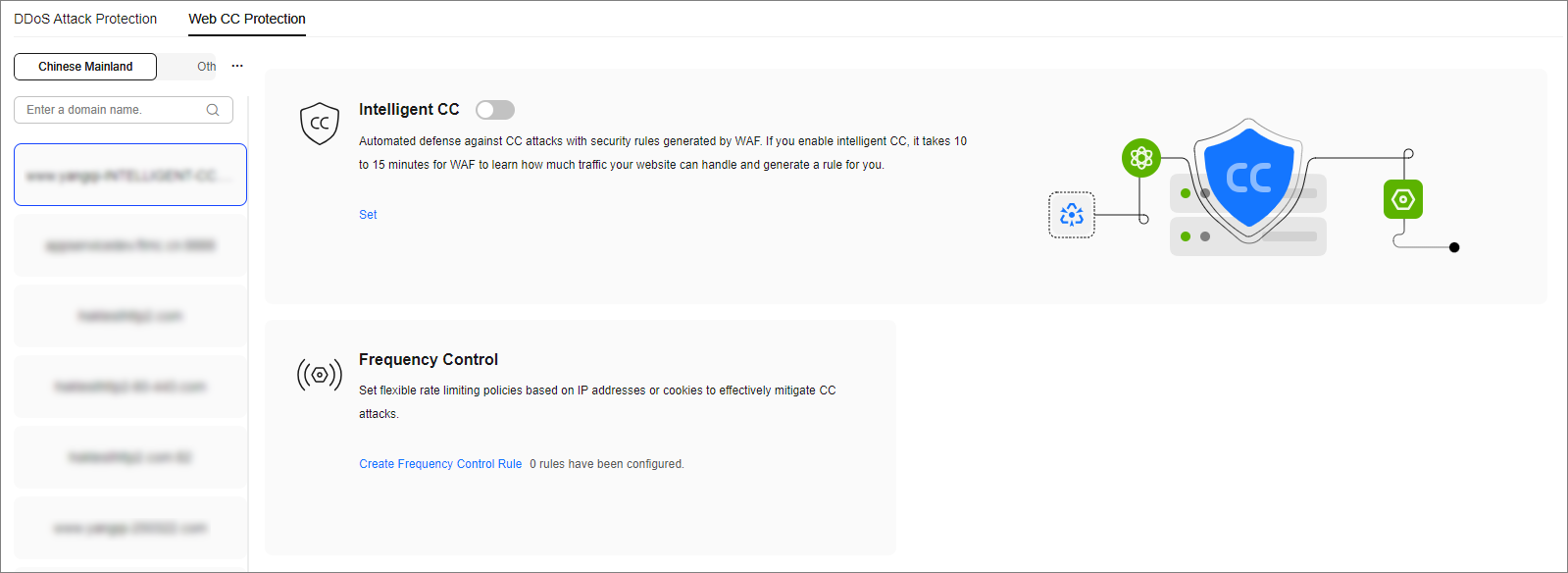Using Intelligent CC Policies to Defend Against CC Attacks
If you enable intelligent CC attack protection, AAD uses built-in AI-powered models to analyze traffic to your website, identify CC attacks and abnormal features in HTTP requests on the origin server, and generate specific precise protection and access control rules for your website. In this way, AAD can then automatically protect your website from CC attacks.
Limitations and Constraints
This function is in the internal test phase and is available only to some users. If you want to use it, submit a service ticket.
Prerequisites
Basic Web Protection has been enabled for website services. For details, see Enabling Basic Web Protection.
Enabling Intelligent CC
- Log in to the AAD console.
- In the navigation pane on the left, choose Advanced Anti-DDoS > Protection Policies. The Protection Policies page is displayed.
Figure 1 Advanced Anti-DDoS protection policies

- Click the Web CC Protection tab.
Figure 2 Web CC protection

- After selecting the region and object to be protected, click Set under Intelligent CC.
Figure 3 Intelligent CC

- Set the protection policy as required, as shown in Table 1.
Figure 4 Setting Intelligent CC

Table 1 Parameter description Parameter
Description
Schema
- Warning: Records log but does not block malicious requests.
- Protection: Block malicious requests and records logs.
Severity
- Lenient: Only known malicious attacks are blocked. This mode is suitable for large-scale websites and ensures that normal requests are not mistakenly blocked.
- Normal: Ideal for scenarios with stable request volumes and redundant server processing performance. When detecting malicious attacks, with intelligent protection enabled, the impact on normal services is little. In this case, you are advised to use this level.
- Strict: Suitable for scenarios where website performance is poor and protection needs to be stringent. However, some legitimate requests may be mistakenly blocked.
- On the Web CC Protection page, set Intelligent CC to
 to enable protection.
to enable protection.
Feedback
Was this page helpful?
Provide feedbackThank you very much for your feedback. We will continue working to improve the documentation.See the reply and handling status in My Cloud VOC.
For any further questions, feel free to contact us through the chatbot.
Chatbot





